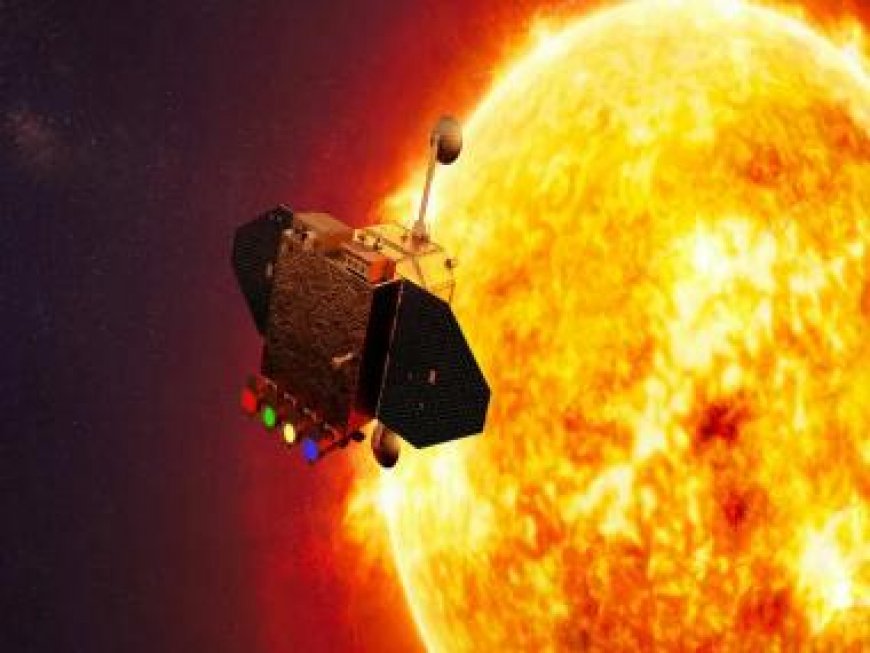Aditya-L1 Update: ISRO performs vital manoeuvre, slingshots solar observatory to Lagrange Pt. 1
Aditya-L1 Update: ISRO performs vital manoeuvre, slingshots solar observatory to Lagrange Pt. 1

The Indian Space Research Organisation (ISRO) has achieved a significant milestone with the successful execution of the Trans-Lagrangian Point 1 Insertion (TL1I) maneuver at approximately 2 am. This manoeuvre marks the initiation of the Aditya-L1 spacecraft’s 110-day journey towards the L1 point, situated along the Sun-Earth line. L1 is located approximately 1.5 million kilometres away from Earth, constituting roughly 1% of the Earth-Sun distance.
ISRO proudly announced the spacecraft’s departure towards the Sun-Earth L1 point following the successful execution of the TL1I manoeuvre.
Aditya-L1 Mission:
The fourth Earth-bound maneuvre (EBN#4) is performed successfully.ISRO’s ground stations at Mauritius, Bengaluru, SDSC-SHAR and Port Blair tracked the satellite during this operation, while a transportable terminal currently stationed in the Fiji islands for… pic.twitter.com/cPfsF5GIk5
— ISRO (@isro) September 14, 2023
The spacecraft is now on a trajectory leading it to L1, where it will be inserted into an orbit after approximately 110 days. This achievement is the fifth consecutive successful transfer of an object on a trajectory toward a celestial body or space location by ISRO, as stated on the organization’s platform.
The TL1I manoeuvre signifies the commencement of Aditya-L1’s journey away from Earth’s orbits toward the L1 point, positioned around 1.5 million kilometres from our planet. Aditya-L1 embarked on this journey from the Satish Dhawan Space Centre in Sriharikota (SDSC-SHAR) on September 2.
The scientific data collection phase of the mission has officially begun. The sensors of the Supra Thermal and Energetic Particle Spectrometer (STEPS) instrument have started measuring supra-thermal and energetic ions and electrons at distances exceeding 50,000 kilometres from Earth. This instrument is an integral part of the Aditya Solar Wind Particle Experiment (ASPEX) payload.
The data collected during the spacecraft’s 16-day stay in Earth’s orbits will enable scientists to analyze the behaviour of particles in the vicinity of Earth, particularly in the presence of Earth’s magnetic field. The instrument comprises six sensors that conduct observations in various directions, measuring supra-thermal and energetic ions within the range of 20 keV/nucleon to 5 MeV/nucleon, as well as electrons surpassing 1 MeV.
Supra-thermal ions are ions with considerably high energies. One kilo electron volt (keV) equals 1,000 electron volts (units used to gauge the kinetic energy gained by an electron as it accelerates in an electric field created by a one volt increase). Meanwhile, one MeV corresponds to one million electron volts.
ISRO has reported that STEPS was activated on September 10 at a distance exceeding 50,000 kilometres from Earth, which is well beyond the Earth’s radiation belt region. Data collection continued after necessary instrument health checks were completed, extending beyond the 50,000-kilometer mark from Earth.
STEPS measurements will persist during Aditya-L1’s cruise phase leading up to L1 and once the spacecraft is positioned in its intended orbit. The data collected around L1 will provide valuable insights into the origin, acceleration, and anisotropy (variation of properties along different directions) of solar wind and space weather phenomena.
It is worth noting that STEPS was developed by the Physical Research Laboratory with support from the Space Application Centre in Ahmedabad.
What's Your Reaction?



























































